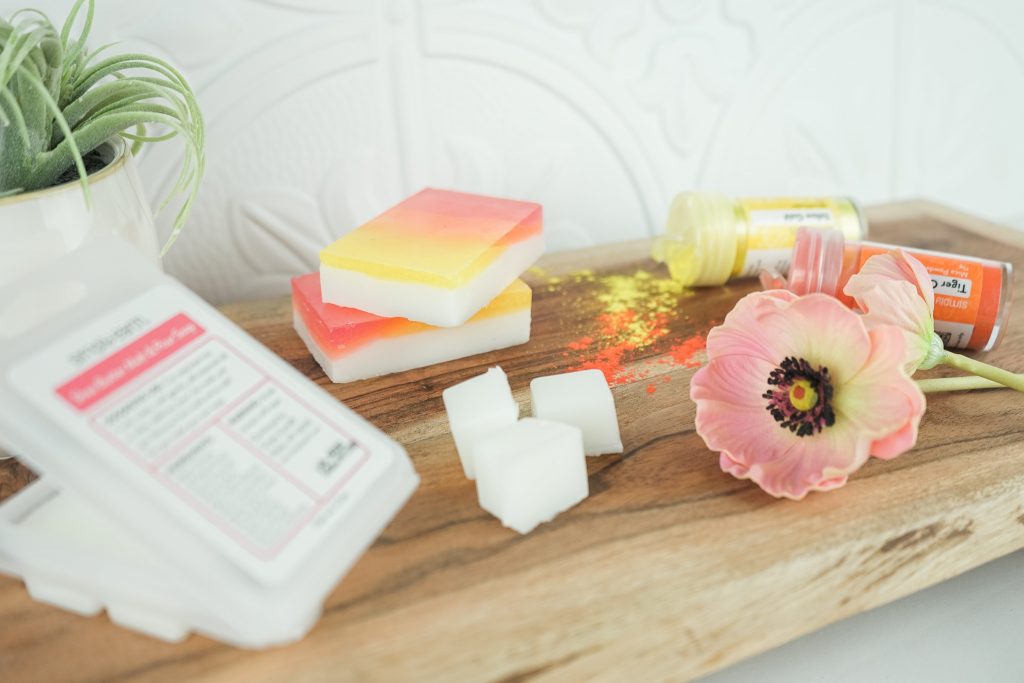
It is said that an ancient African queen used a special combination of shea butter and herbs to nourish her skin. Fast forward many centuries later, you too can reap the benefits of shea butter with its widespread use as a soap base. But what is it? What are the benefits of using this soap base compared to other products? How do you use it correctly? Don’t worry—we have all the answers here for you. Read ahead to learn about shea butter soap base and why it should be part of your regular beauty routine.
What is Raw Shea Butter?
Raw shea butter is an incredibly versatile, all-natural product that’s been used for centuries to moisturize and protect the skin, hair, and lips. It’s made from the shea nut of the African Karite tree, which is native to many parts of Africa, so it’s one of those special ingredients with full-blown cultural significance. Plus, since it’s loaded with vitamins A, E, and F, raw shea butter can be invaluable for nourishing your skin and preventing premature aging by preserving its vital elasticity.
Shea Butter Soap Base Ingredients + EWG Score
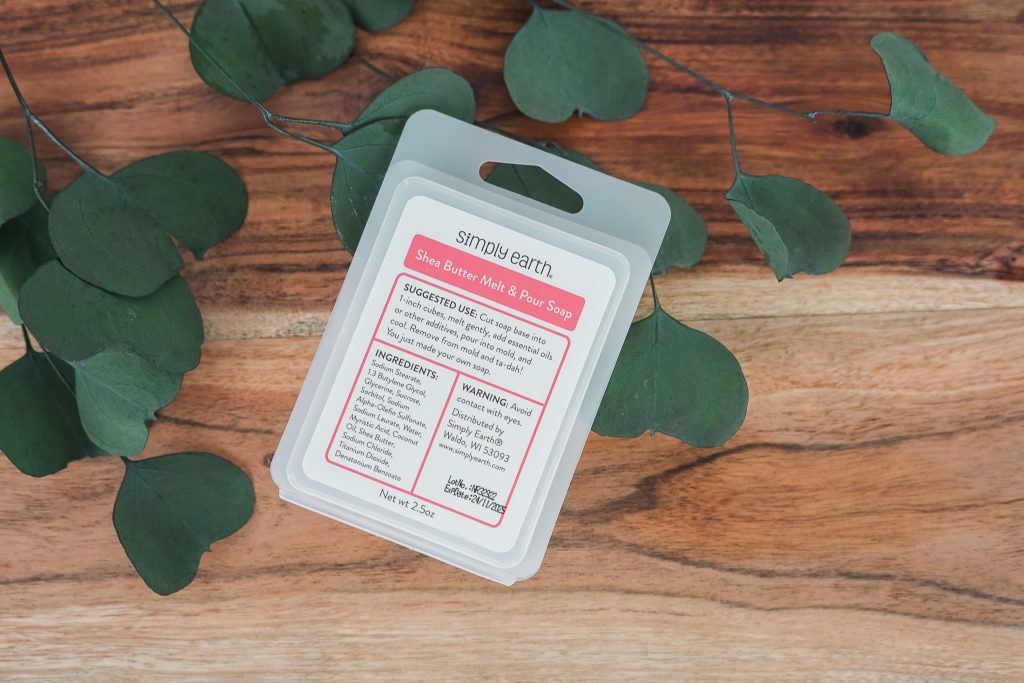
Sodium Stearate (1)
Shea Butter Soap Base is known to be mild and friendly to most skin types due to its main ingredient: Sodium Stearate. It’s a sodium salt of stearic acid, a naturally occurring fatty acid found in certain butter and oils. It’s the most common fatty acid salt in today’s soaps and plays an important role as a detergent.
1.3 Butylene Glycol (1)
Shea butter soap includes 1.3 butylene glycol, a small organic alcohol with impressive powers that make it great for many skin and beauty care products. Not only does it serve as an efficient antimicrobial agent, but it also acts as a viscosity-decreasing agent to ensure that the finished product has a smooth texture.
Glycerine (1-2)
Glycerine is an invaluable skincare essential that moisturizes and rejuvenates your skin. You can find it naturally in vegetable oils or animal fats. It’s also a humectant, which pulls in just the right amount of moisture to keep your skin youthful and blessed with a natural glow.
Sucrose (1)
If you’ve ever wondered where natural soap’s delicious goodness comes from, look no further than sucrose. It’s a simple yet powerful ingredient harvested naturally from plants that can help keep your skin soft and moisturized all day.
Sorbitol (1)
One of the most crucial ingredients is sorbitol, a type of sugar alcohol. It offers viscosity control, making your soap smooth and not overly slippery. Plus, it helps to condition the skin during cleansing – like an extra set of hands that help improve texture and leave you feeling silky soft after each use.
Sodium Alpha-Olefin Sulfonate (1)
Sodium Alpha-Olefin Sulfonate (commonly known as Sodium a-olefin sulfonate) is a remarkable ingredient in some of your favorite products! It is widely used to create effective yet gentle detergents and make great personal care items. However, this element must be handled carefully in order to give you the cleanliness you need without stripping away the protection Mother Nature provides.
Sodium Laurate (1)
Shea Butter Soap Base Ingredient Sodium Laurate is the key to a luxurious lather. This particular surfactant and emulsifier is classified as soap and is believed to have antimicrobial properties, too – so you can enjoy sudsing up without the worry!
Water
Water is a key solvent in many soaps. This humble liquid absorbs other substances and helps them mix into the soap without needing to be heated up, which is essential for retaining their natural properties.
Myristic Acid (1)
Known as a cleansing agent and a refreshing fragrance, Myristic Acid is an organic acid derived from palm oil, coconut oil, and butter fat; it serves as an emulsifier, too, working to allow other ingredients like oils and butter to bind together.
Coconut Oil (1)
Coconut Oil is a fragrance agent, skin conditioner, moisturizer, and emollient – it sounds like a whole package of gifts to your skin! Packaging it into a luxurious shea butter soap base ensures you get all its glowing benefits with minimal effort.
Shea Butter (1)
This nutrient-rich cosmetic butter has accurately been described as the ‘creme de la creme’ when it comes to soap-making. Not only does shea butter provide a luxurious and creamy texture for your soap bar, but its natural oils help to control viscosity. It also ensures that your homemade soap offers optimal moisturizing and emollient relief for any skin type and is full of vital vitamins and antioxidants.
Sodium Chloride (1)
One ingredient whicOne ingredient which should be noted is Sodium Chloride, commonly known as table salt. This essential additive helps to regulate viscosity and provides the perfect base for a large variety of soaps and lotions.
Titanium Dioxide (1-3)
Titanium Dioxide, a solid white pigment frequently used in sunscreen, is also part of the equation! This gives the soap a subtle glow and additional sun protection benefits.
Denatonium Benzoate (1)
This bitter compound’s primary purpose is to deter accidental ingestion. Rather than just having a strong scent or flavor to dissuade people from tasting it, Denatonium Benzoate is exceptionally bitter and utterly unforgettable. Unsurprisingly then, it’s often referred to as the “bitterest compound in the world”!
Shea Butter Benefits for the Skin
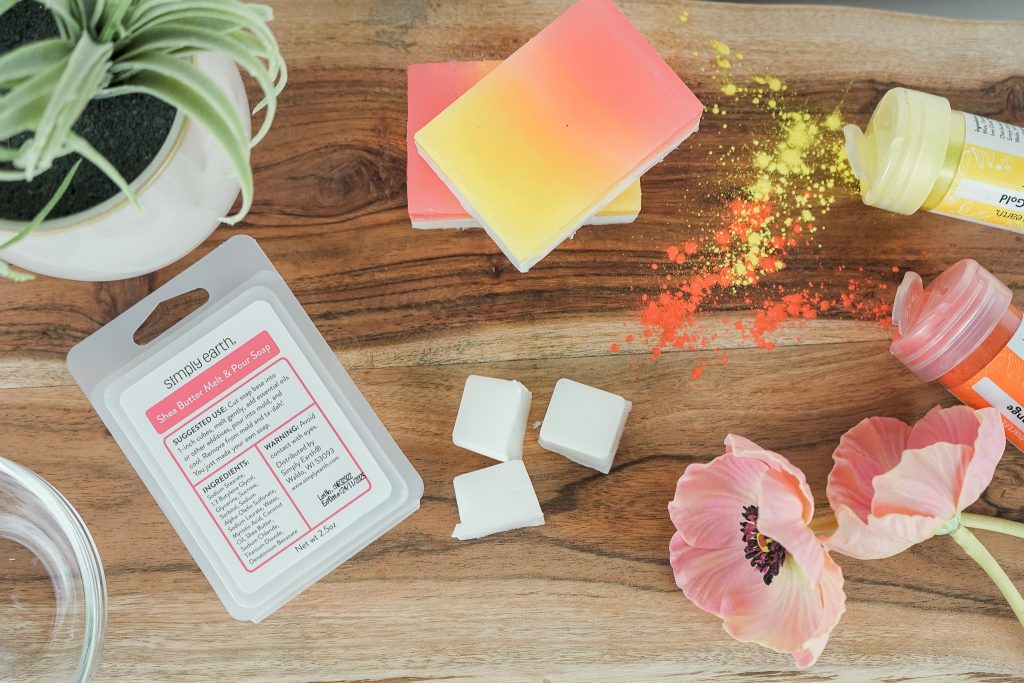
All-Natural
Shea butter soap is made with all-natural ingredients, which means it’s gentle on your skin and won’t cause any irritation. Additionally, all-natural soaps are better for the environment as they don’t contain any synthetic chemicals or fragrances.
Moisturizing
Shea butter is a natural emollient that helps lock in moisture and hydrates your skin. This is especially beneficial for people with dry skin, as it can help to prevent flaking and itching.
Anti-inflammatory
Shea butter has anti-inflammatory properties, which can help reduce redness and swelling. This makes it ideal for people with sensitive skin or conditions like eczema and psoriasis.
Rich in Vitamins and Nutrients
Shea butter is rich in vitamins A, E, and F and several other beneficial nutrients for the skin. These vitamins and nutrients help to nourish the skin and promote cell regeneration.
Has a Pleasant Scent
Shea butter soap typically has a pleasant, nutty scent that many people find enjoyable. Additionally, because shea butter soap is made with all-natural ingredients, you can be sure that the smell won’t cause any irritation.
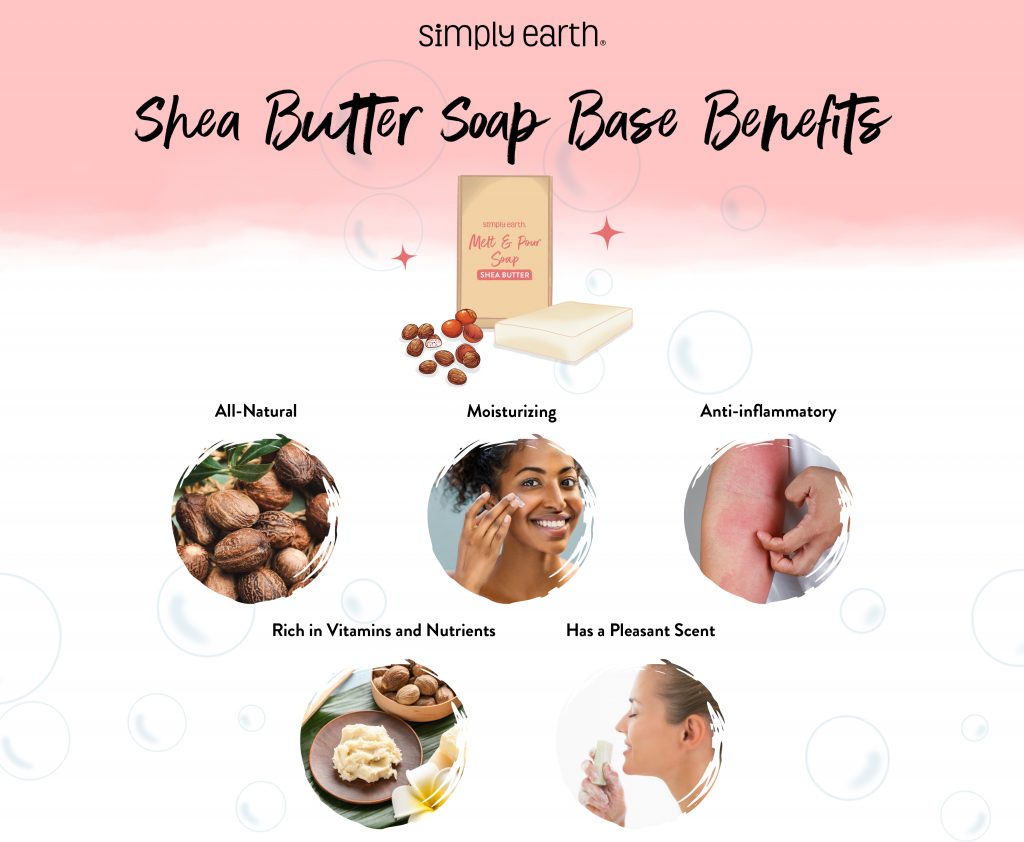
How to Use Shea Butter Soap
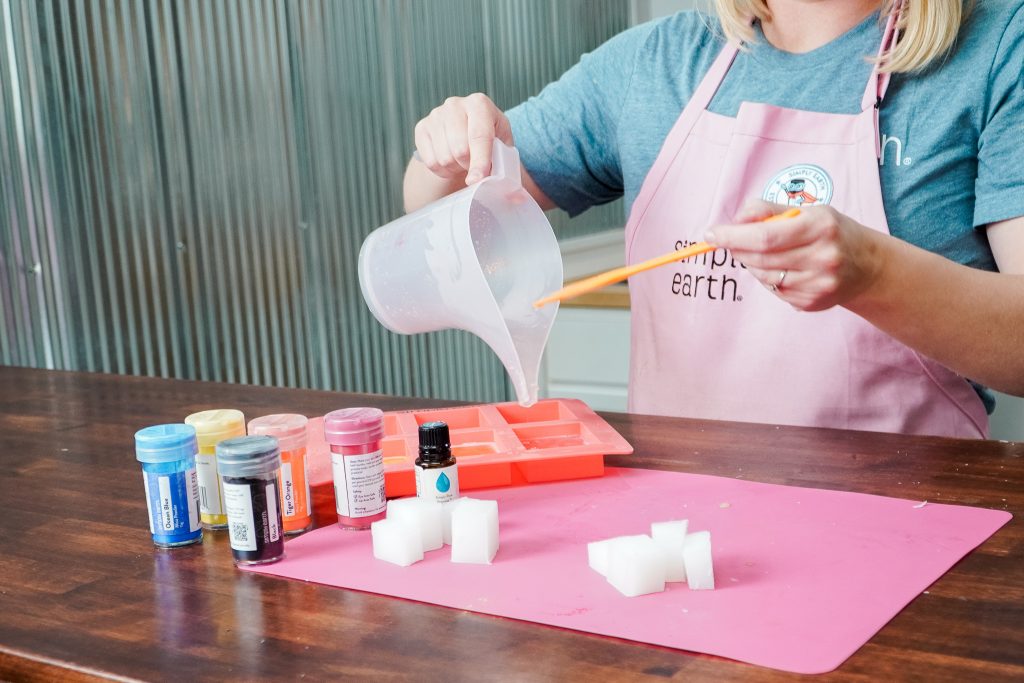
First, you cut the soap into small cubes and place it in a microwave-safe bowl or container. Then you heat the soap in short increments until it melts, stirring as needed. Afterward, you can add whatever you want to make your custom blend of natural ingredients like essential oils, exfoliants, and colorants! Finally, pour your creation into a mold – grab your patience because it takes about 30 minutes to cool and solidify. Now all that’s left to do is admire your creation before it’s all used up!
Melt & Pour Soap Cheat Sheet

Have you ever wanted to make your own soaps at home? Well, there’s an easier way – melt and pour soap! A melt & pour soap cheat sheet can help eliminate the hassle of making your own soap. You no longer have to worry about ingredients or measurements – add any special additions, like essential oils or exfoliants, pick a recipe, and jump right in. The best part is that you can get as creative as you want with the colors and scents. So whether you are looking for a relaxing blend of lavender oil or a refreshing mix of citrus, this melt & pour soap base cheat sheet has all the ideas and recipes you need to get started on your own luxurious creations!

